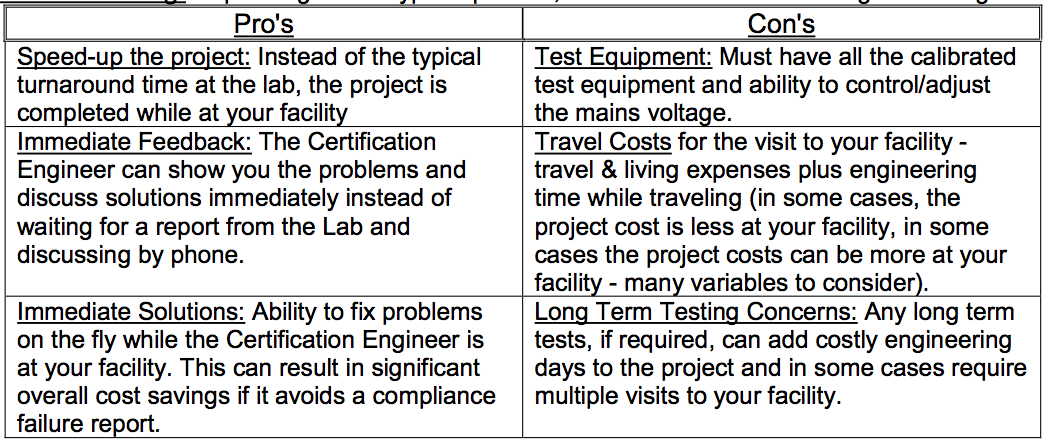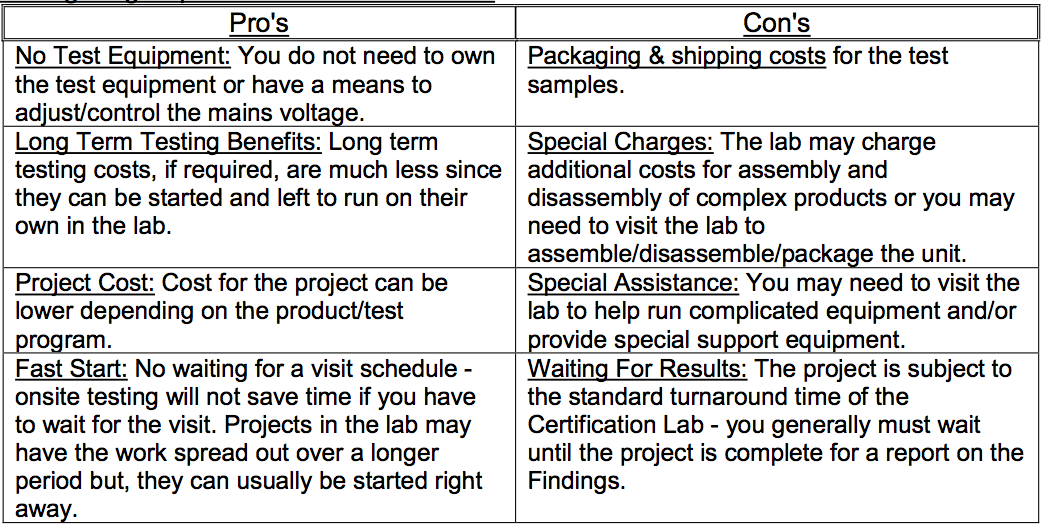In some cases, it may be necessary for you to have the product testing done at yourfacility. Other times, there may be a benefit to having testing done at your facility. In either
case, there are pro’s and con’s for testing being performed at your facility vs. the
certification lab.
Critical Questions for On-Site Testing: Do you have the specialized test equipment
required by the standard? And, is the test equipment calibrated in accordance with the
standard by an ISO17025 accredited calibration lab?
- In general, the Certification Lab will not bring the test equipment to your facility
(considerable time to pack/unpack equipment, risk of damage to equipment in
transit, special shipping containers required, and accreditation concerns with
shipping calibrated equipment). Perhaps more importantly, if the lab brings the
equipment, how is testing completed on schedule/budget if any equipment arrives
damaged? -
Most standards have tests that will necessitate the ability to adjust and control the
mains voltage to the product (i.e. ± 10%). For this you would need a variac
(variable auto-transformer) or power source. -
If you are testing for US and International compliance, you will need to have 60 Hz
and 50 Hz power sources – with the ability to adjust and control the voltage. For
this you will need a power source (a variac will not be adequate unless you already
have both 50 & 60 Hz power available). -
The testing in the safety standards involves a lot of specialized test equipment that
most companies do not have unless they have done this before. Some of the
typical equipment includes accessibility probes, leakage current tester, ground
continuity tester, hipot tester, abnormal test materials, thermocouples and
temperature meter, temperature/humidity chamber, etc. Rough estimate is $5-
$15K plus environmental chamber if needed. You may want to identify your tests
and the test equipment required before making a decision on where to test. See
www.productsafeT.com for assistance with safety test equipment.
Reasons Why You May Be REQUIRED to Test at Your Facility:
- Size of equipment – too big for the lab to move or assemble?
- Special voltage and/or high power needs – does the lab have the power/power control?
- Operation of equipment requires specially trained personnel and/or support equipment
On-Site Testing: Depending on the type of product, the benefits of onsite testing can be significant

Testing Large/Special Products at the Lab: Sometimes it still makes sense to test at the lab.

